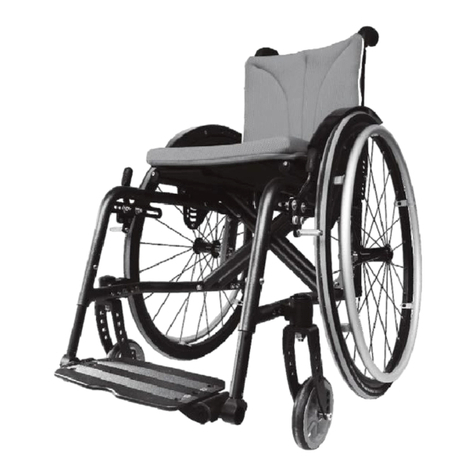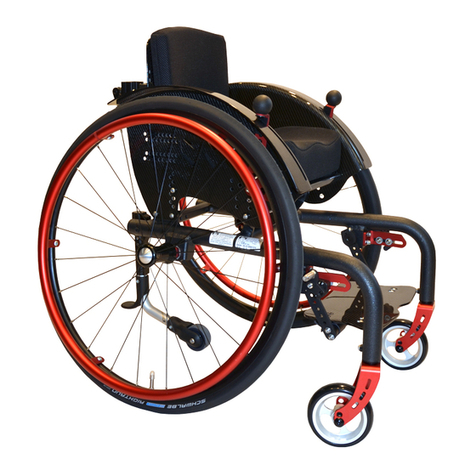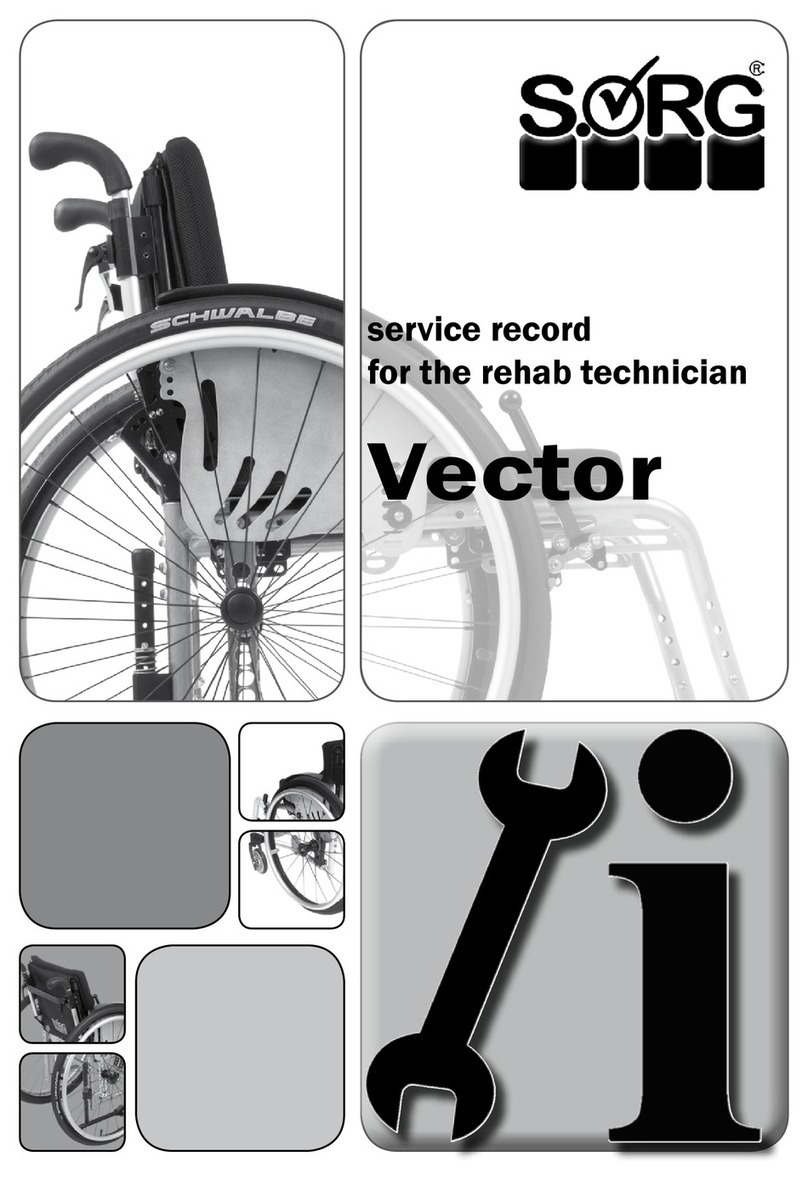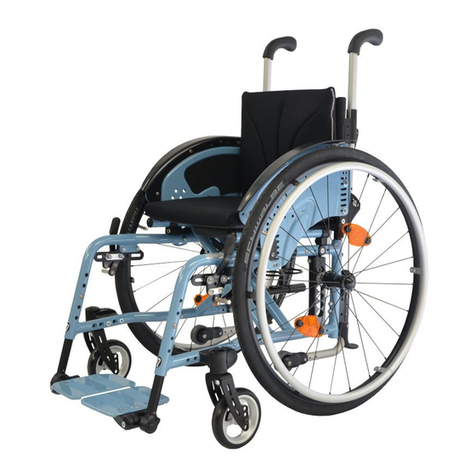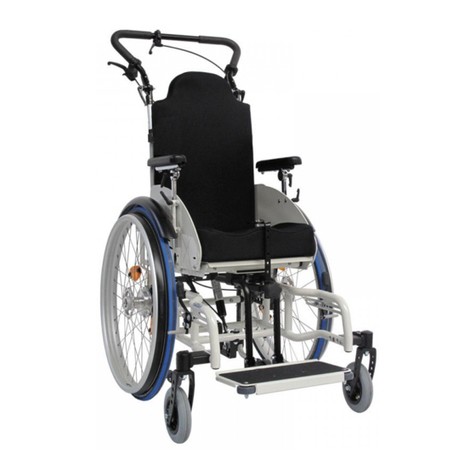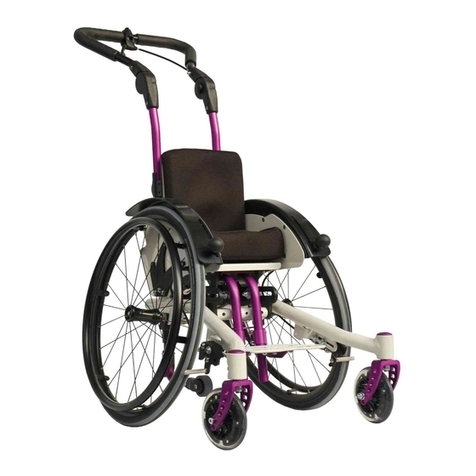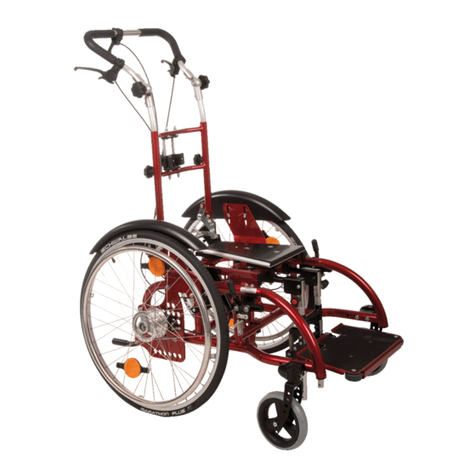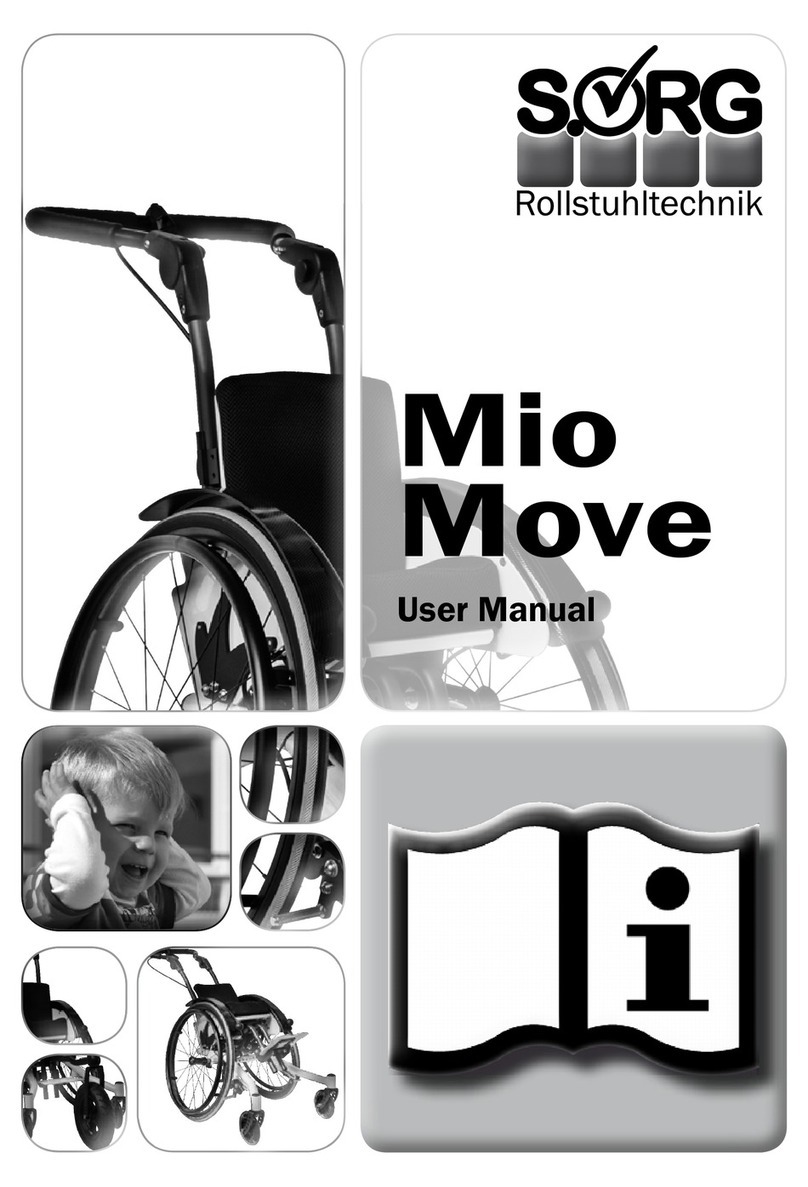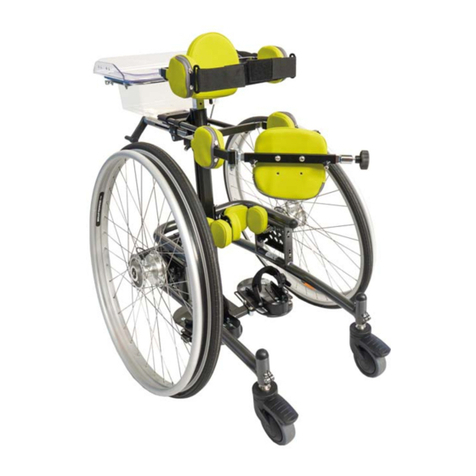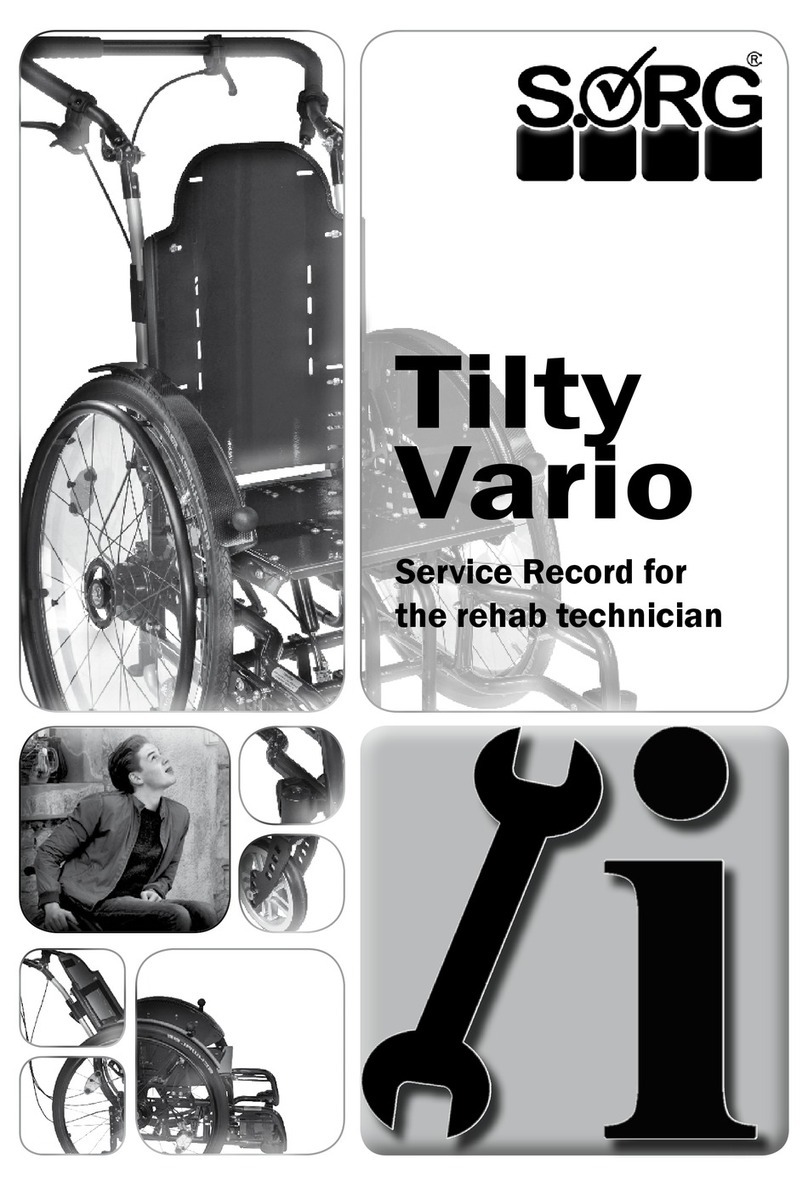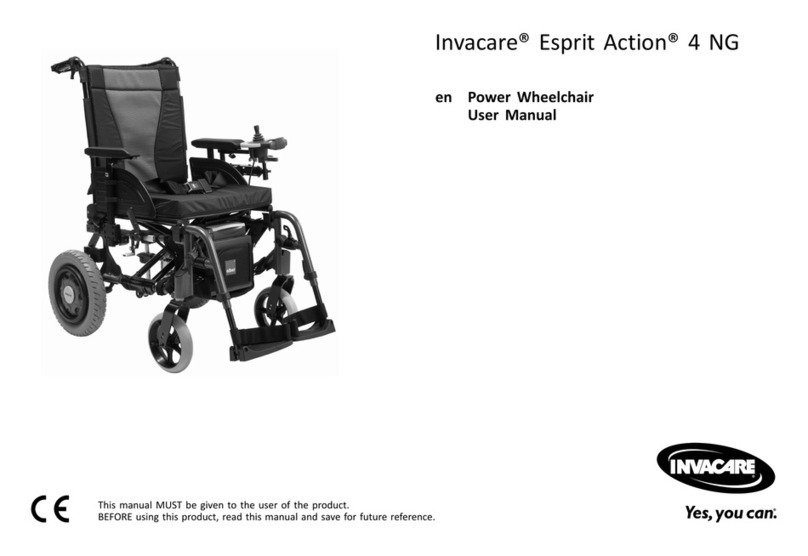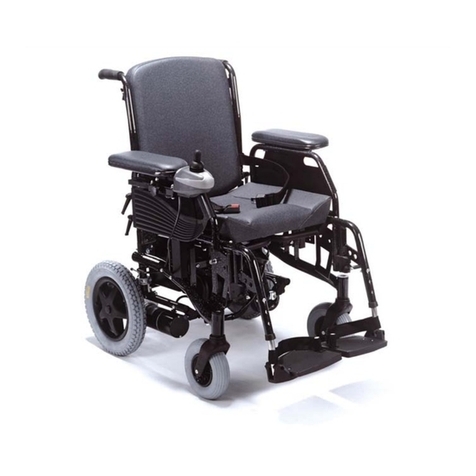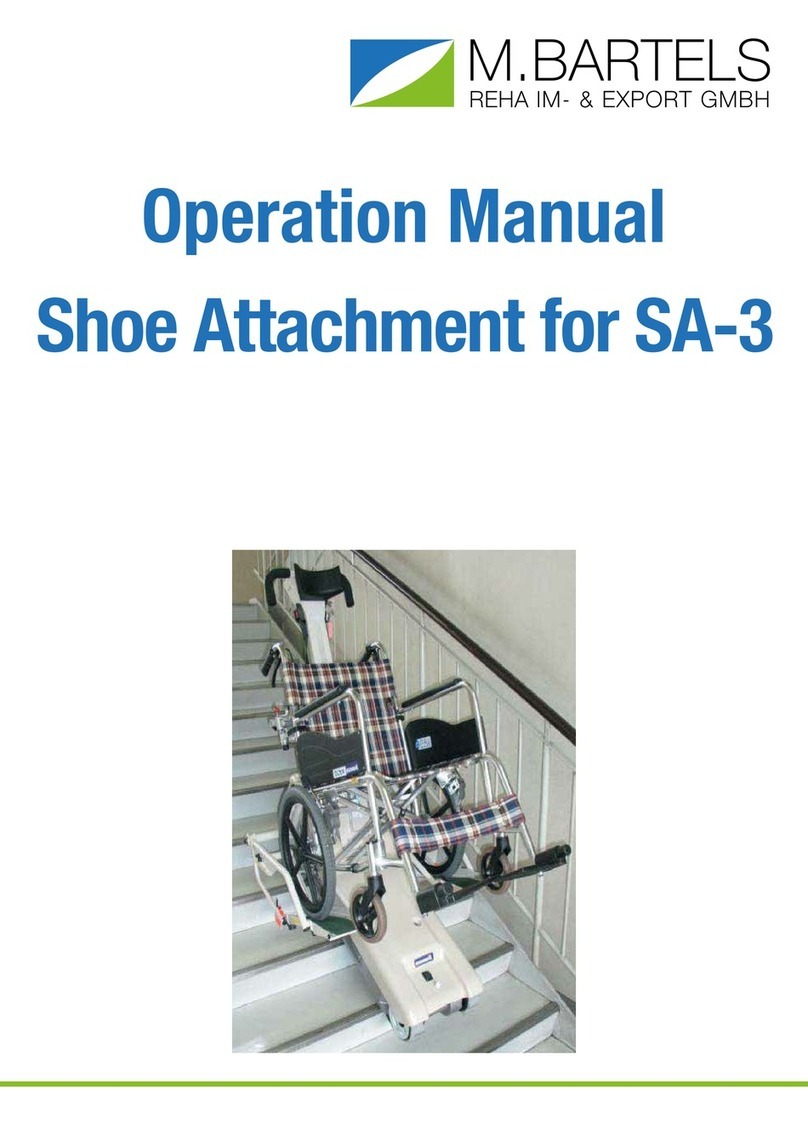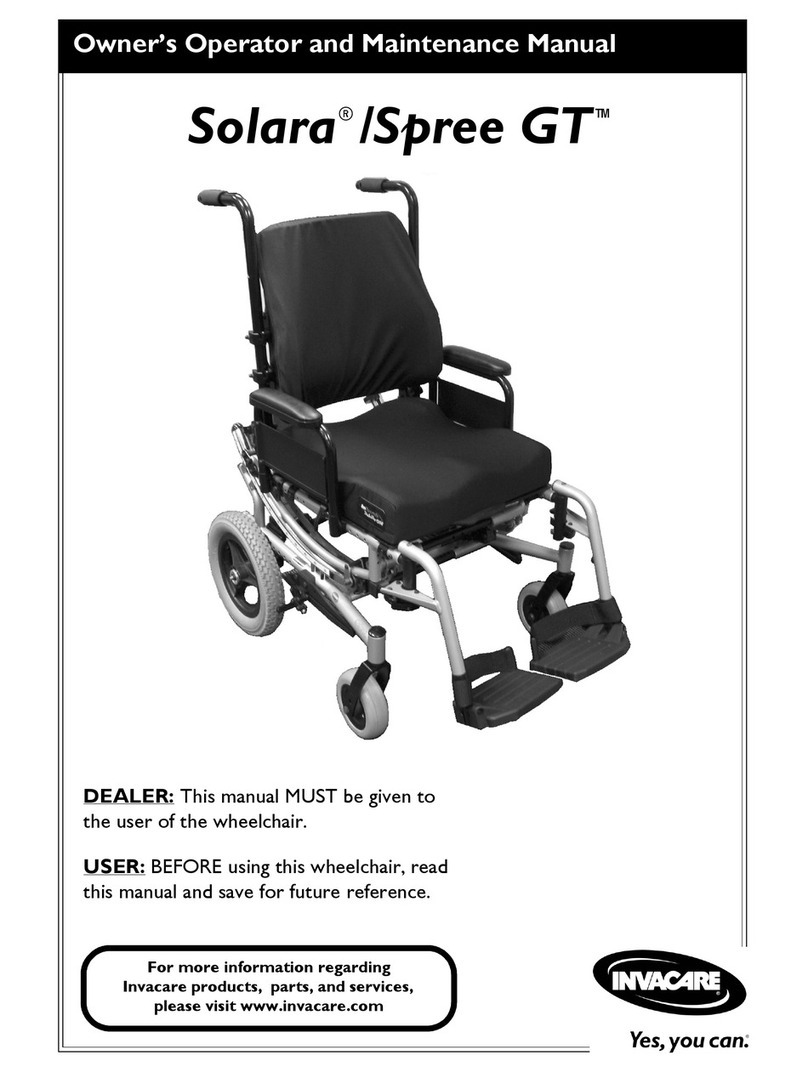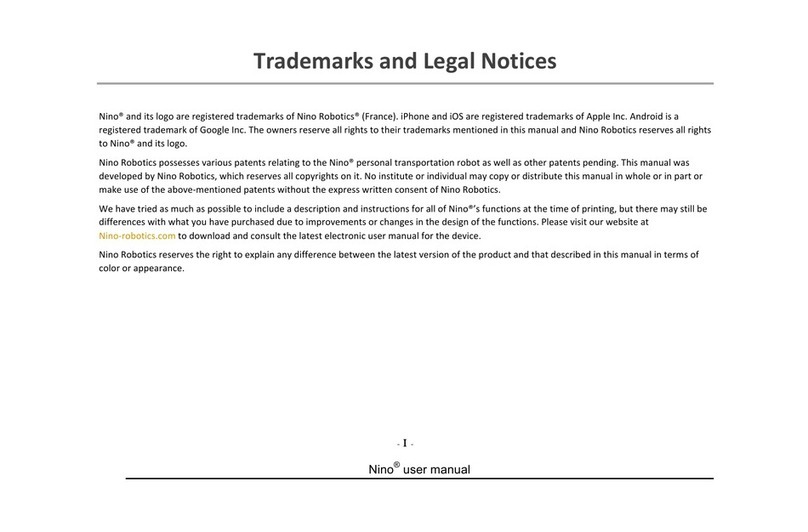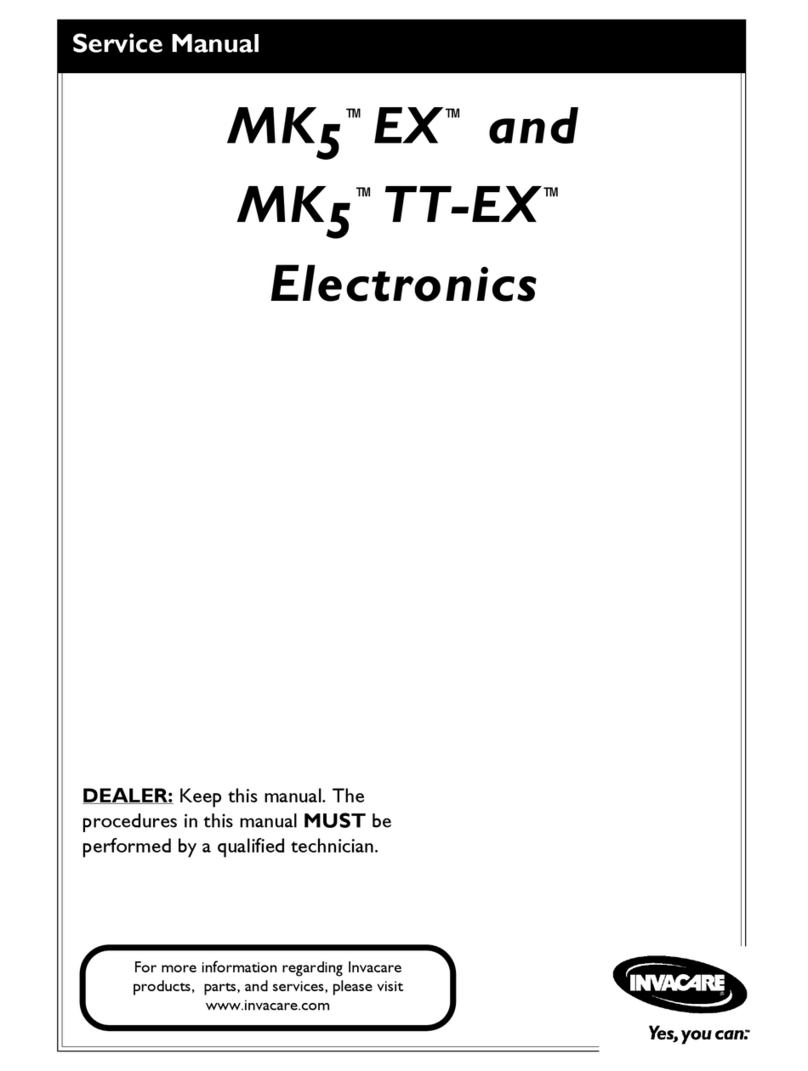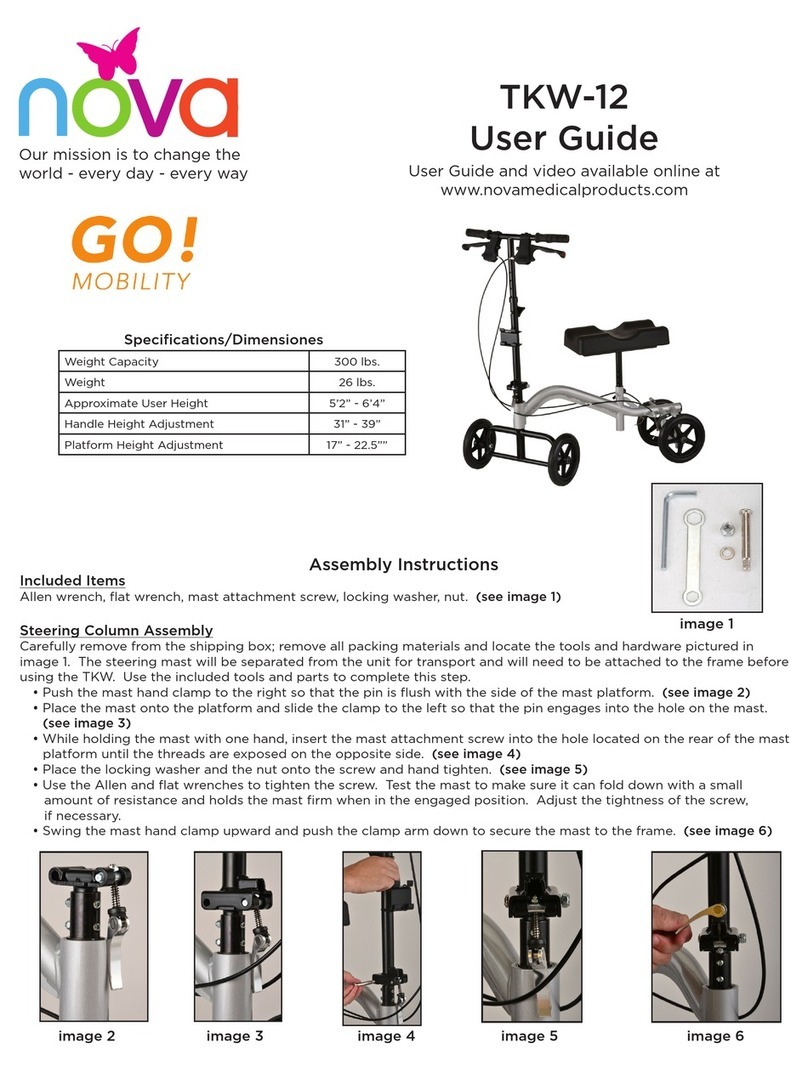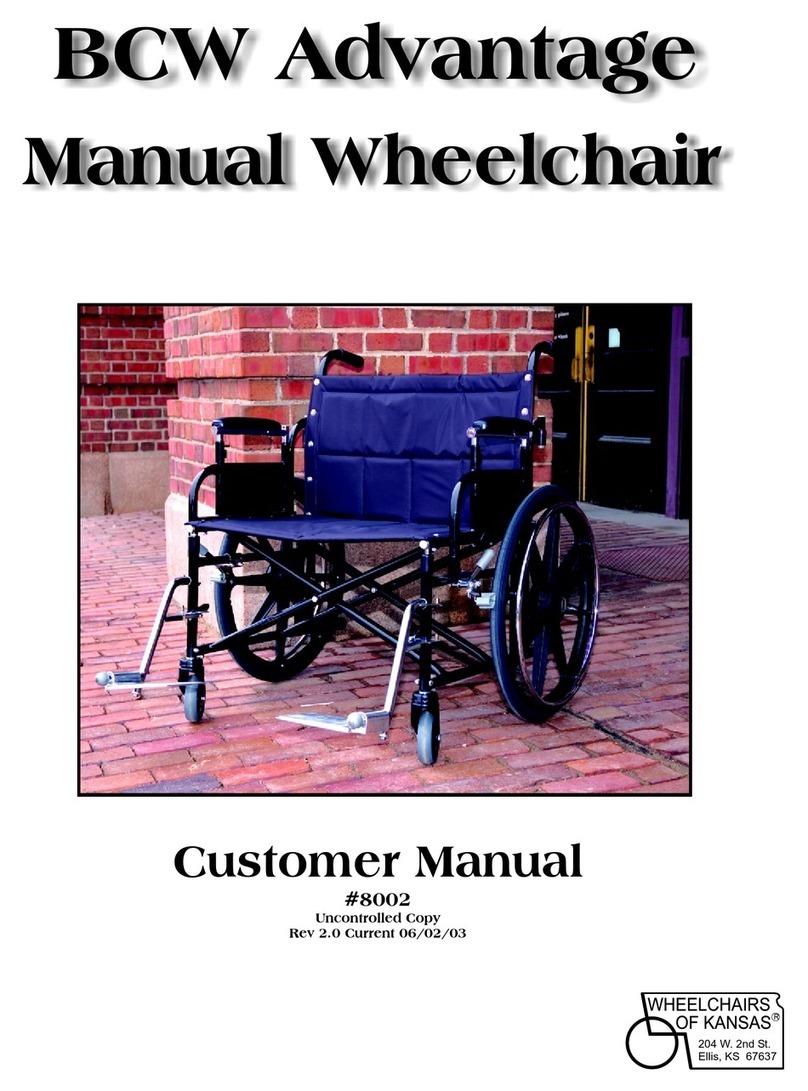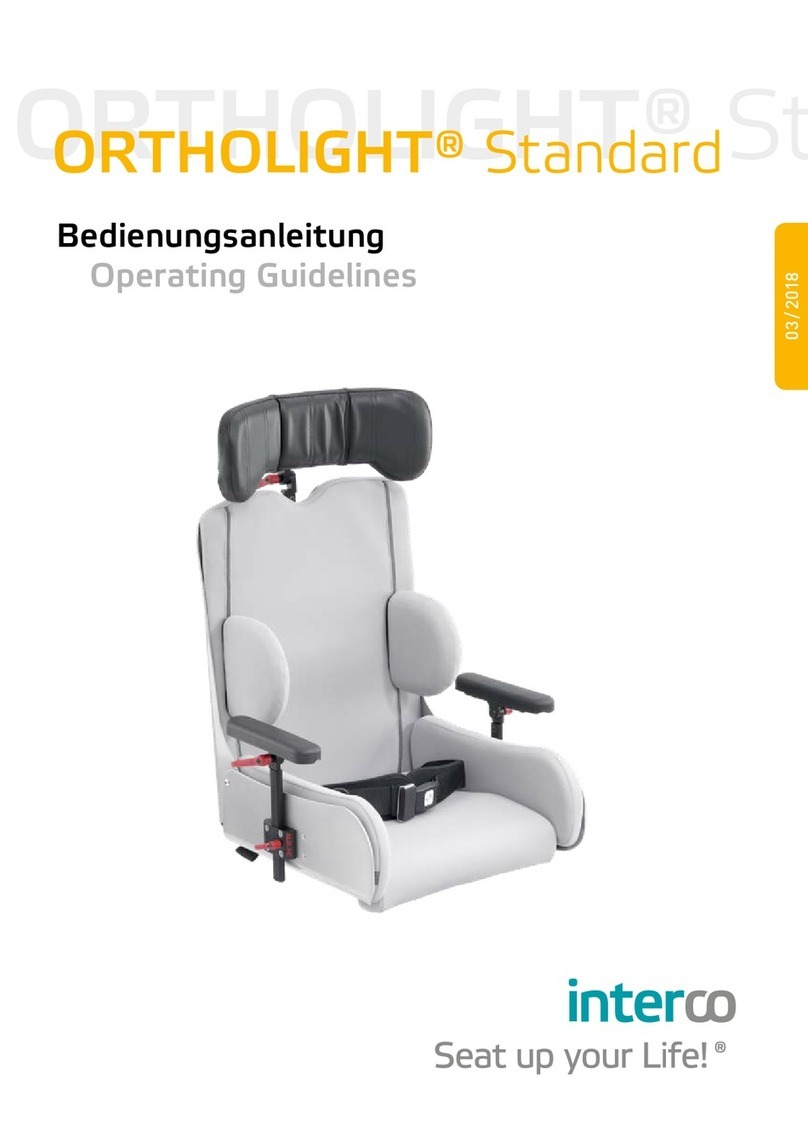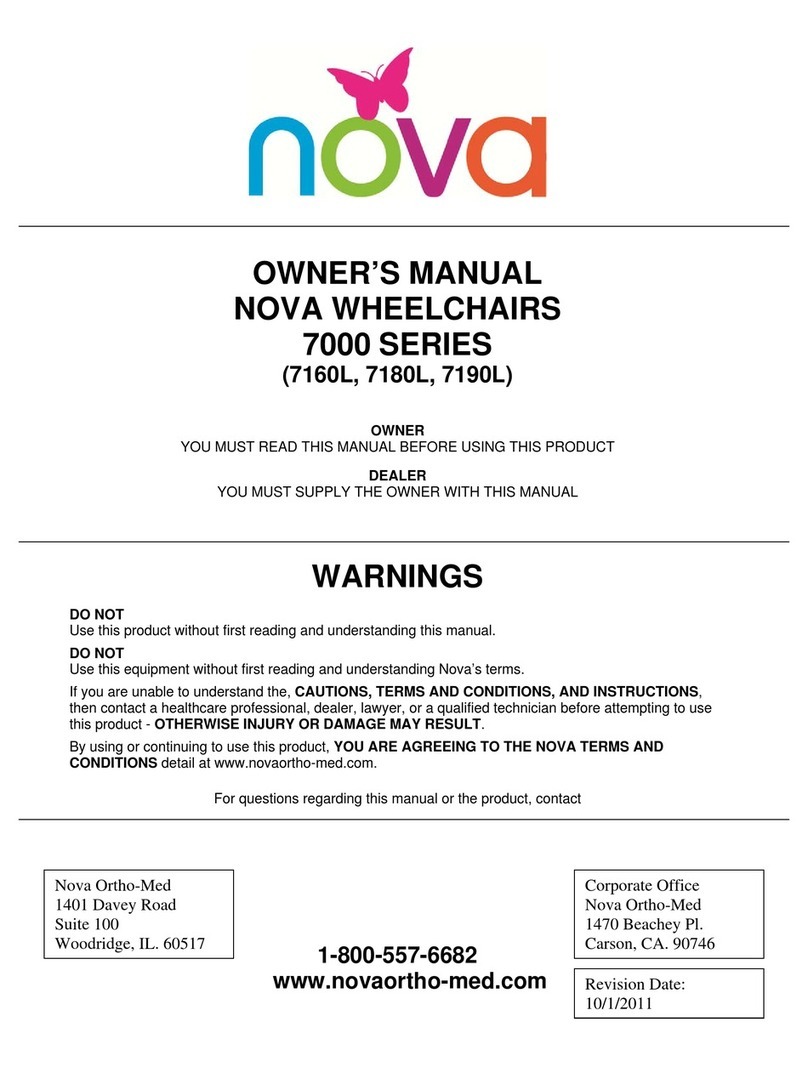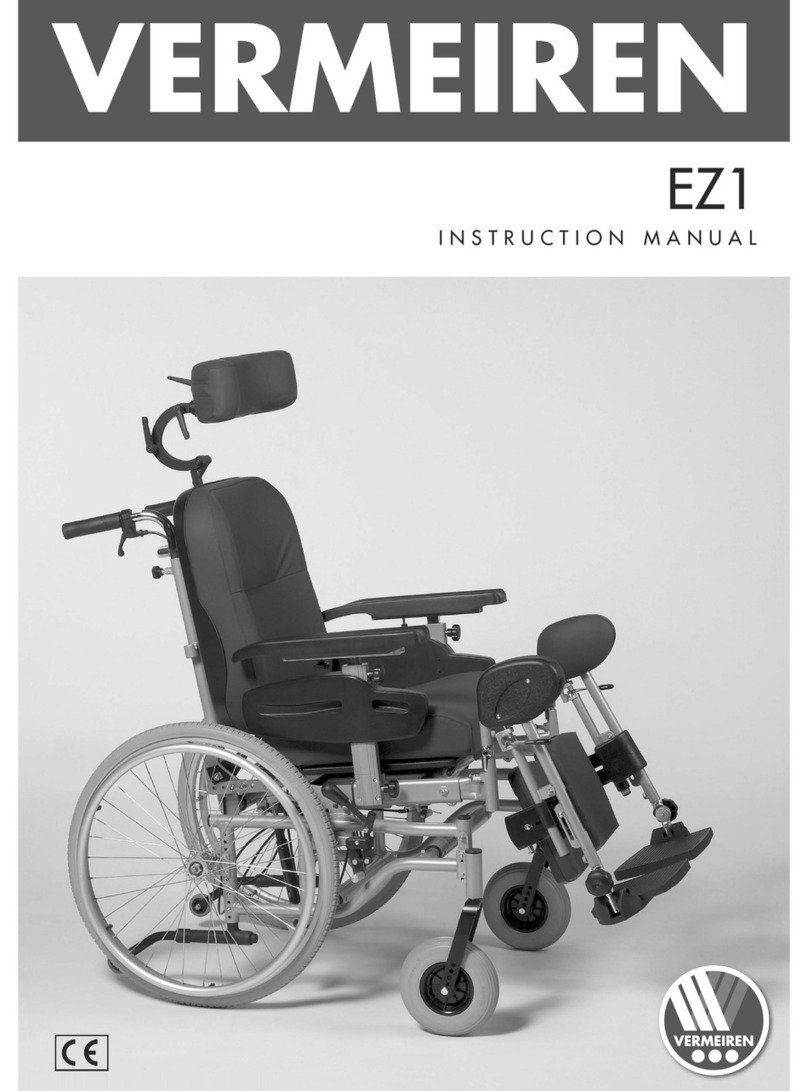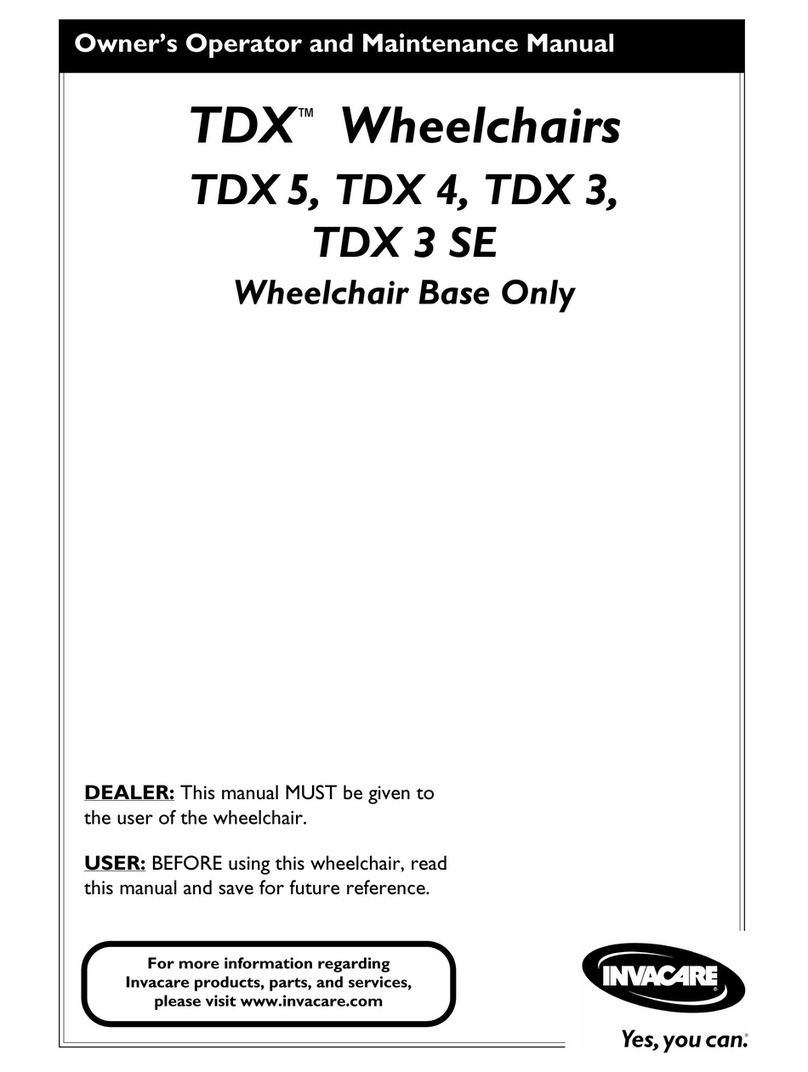
10 of 32 Service Record Mio (Design 2018)
Service Record Mio (Design 2018) 2019-07-16
3.2.2 Widening the seat
3.2 Assembly group seat
(1) To increase the seat width by 20 mm / 2
cm, you must remove the rear wheels, prevent
the wheelchair from rolling away and proceed
as follows:
• Completely remove screw connection
between seat plate and seat support
brackets,
• Completely remove screw connection
for depression
• Completely remove side guards,
• Move spacer bushes.
(1) Remove seat plate
• Remove both screws (D) on both sides.
• Leave the seat support bracket (A) con-
nected to the side panels.
(1) Remove the depression
• Remove all screws (E) on both sides.
• Leave the rear support brackets (C)
connected to the side panels and remo-
ve only the back of the rm curved back
plate
(2) Remove side guards
• Remove all screws (A) on both sides.
• Leave the seat support brackets (B)
connected to the side panels.
• Remove the spacers (C).
(3) Moving the spacers / widening of the
wheelchair
• The wheelchair is delivered by us in
such a way that the spacers (A) neces-
sary for the seat broadening sit on the
inside.
• Move the spacers (A) between the side
panel (B) and the brackets (C).
• Replace all screws (D) and turn them
tight.
After the seat widening sit the spacers (A) on
the outside between side panel and side panel
holder.
(1) Insertion of the depression
• Use the screws (E) to screw the depres-
sion back into the new holes (F).
• Check all screw connections.
• To change the seat height / seat angle:
• Completely remove the screws of the
seat support bracket on both sides,
• Bring the seat plate into the desired
position,
• Reinstall screw connections and tighten
tightly.
(A)
(D)
(F)
(F)
(D)(F)
(C)
(E)
(B)
Seat plate shown trans-
parently
(3)
(C)(C)(A) (A)
(D)
(B)
(A)
(C)(B)
(2)
(1)
